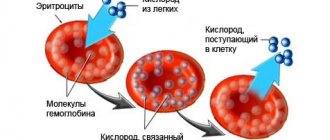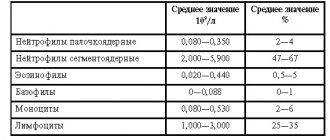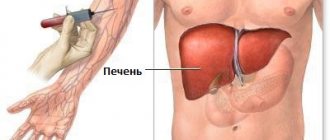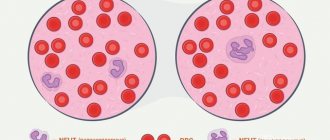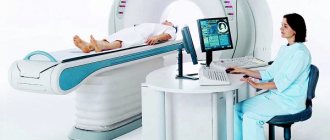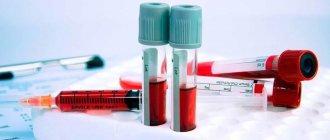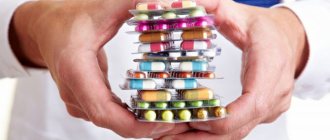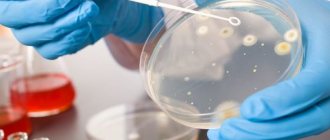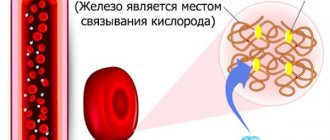Determining atherogenicity allows us to understand and assess the health status of any person, regardless of age. Experts use this indicator to identify the possibility of various pathologies of the heart and blood vessels. These diseases often lead to the death of patients around the world. A sedentary lifestyle has caused an increase in strokes and heart attacks, but each of us can learn a little more about our own health. This will help prevent and detect diseases in time and contact specialists in order to receive timely treatment. The atherogenic coefficient is reduced, what is it, let’s look into this issue together.
What is the importance of the atherogenic index
To put it unequivocally, the atherogenicity coefficient reveals the essence of metabolic processes in the body. The indicator helps to understand the nature of a person’s diet, determines the ratio of healthy and harmful fats circulating in the bloodstream, and evaluates the functioning of the liver, which synthesizes cholesterol. The atherogenicity index predicts the risk of developing atherosclerosis, cardiovascular diseases, and their complications.
It is known that fats come to humans with food (20%) and are synthesized by the liver (80%). Fats themselves cannot dissolve in liquid; they are hydrophobic and always float on the surface. Therefore, protein-lipid compounds - lipoproteins - are transported from the liver to the cells through the blood vessels.
By combining with proteins, fats acquire density, becoming either high-density or low-density. LDL - low-density lipoproteins are atherogenic, that is, dangerous for humans, since they are the basis for the formation of cholesterol plaques, narrowing the lumen of blood vessels, disrupting the nutrition of organs and tissues. LDL and their precursors - VLDL (very low density lipoproteins) settle on the inner lining of the great vessels, at the site of microtrauma. Then, they are covered with a framework of connective tissue fibers and finally calcified. The atherosclerotic plaque is ready.
High-density compounds of proteins and fats act as human assistants in maintaining the vascular bed in a normal state. HDL - high-density lipoproteins cleanse blood vessels of excess fats circulating in the bloodstream, moving them into the cell. HDL is the smallest in size and easily penetrates the lining of blood vessels and cell membranes. If there is more HDL in the blood, the person is healthy, there is no danger of atherosclerosis from metabolic processes. The predominance of LDL requires adjustment of lipid metabolism.
The correlation of lipoproteins is given by the coefficient or atherogenic index, which is calculated when taking a blood test using the formula: KA = TC - HDL/HDL
Normally, KA does not exceed three units. It is CA that gives a complete picture of the state of lipid metabolism and the risk of developing atherosclerosis in case of increase.
A reduced atherogenic index indicates disorders in the human reproductive system, osteoporosis, possible impotence, and cardiac pathology. Low cholesterol levels cannot be ignored, regardless of a person’s general condition.
Why is this indicator so important?
Previously, internal medicine and cardiology doctors sent their patients to undergo a general blood test, which revealed the general level of lipids. Later, when the beneficial effects of high-density cholesterol were identified, it became possible to evaluate lipid ratios at a more qualitative level. The atherogenic coefficient gives a clearer idea of what exactly a person eats, what type of fat predominates in his food, and also at what level his metabolism is.
This coefficient is measured in mmol/l of blood. The formula for finding the atherogenic coefficient is very simple. It is necessary to separate low-density lipoproteins into high-density lipoproteins. The blood test can only show indicators such as the content of total cholesterol and high-density lipoproteins. In this case, it is necessary to subtract high-density lipoproteins from the total amount of cholesterol, and then divide the resulting difference by the already known indicator of high-density lipoproteins. The formula can be represented as follows:
It turns out that this indicator indicates how healthy and correct the set of fats is in the human body. The norm is the atherogenic coefficient, which falls within the range of 2.2 – 3.5, and many laboratories have recently lowered the upper limit to 3.0. Thus, for most cardiologists' patients, a decrease in the atherogenic index is exactly the goal they should strive for, as opposed to a general decrease in blood lipid components. By the way, this indicator alone, when it increases, does not mean that the patient has atherosclerosis, and a good specialist will conduct additional studies to clarify the clinical picture. Too low values in the range of 1.9 – 2.2 have no clinical significance.
What analysis determines
Monitoring the state of lipid metabolism is necessary to exclude atherosclerosis as a provoking factor of cardiovascular diseases or infertility in the case of low blood cholesterol. Low cholesterol levels are no less dangerous than high cholesterol levels, since there are no symptoms of hypocholesterolemia in the early stages, laboratory diagnosis remains the only way to identify the pathological process. Lipoproteins of any density, the atherogenic index is determined by a biochemical blood test independently, but more often as part of a complex lipid profile or lipidogram.
Preparing for the test
Pre-preparation for a laboratory blood test is standard, but mandatory, since it helps to minimize possible factors of unreliable results:
- in contrast to the detection of hypercholesterolemia, the diet before taking the test if low cholesterol is suspected is prescribed only the day before: you need to refrain from fatty foods, make dinner as light as possible;
- the day before testing, you should not overexert yourself physically, if possible, do not overexert yourself mentally or emotionally;
- alcohol is not consumed one day before taking a blood test, smoking is strictly prohibited one hour before the test;
- Blood is donated in the morning, on an empty stomach, in a comfortable sitting position;
- The doctor must be warned about all medications the patient is taking.
If other tests are scheduled on the same day, ultrasound, for example, they are performed after the blood test. To ensure reliability, doctors recommend duplicating the analysis in another medical laboratory.
Progress of the study
If low cholesterol is suspected, an express diagnostic method is often used. It's convenient and fast. The analyzer resembles a glucometer. Battery operated. To determine cholesterol levels, a strip test and a drop of the patient’s blood (after puncturing the skin of the finger with a special lancet) is sufficient. Three seconds, the answer is ready. The analyzer memory is designed for 100 previous results. The mini-device can be used at home.
Of course, this is an indicative analysis, but it makes it possible to make a decision about the need for further examination of the patient or records the cholesterol level that does not cause concern. In the latter case, the patient is recommended to self-monitor lipids or regularly take a rapid test at the clinic. If cholesterol levels rise or fall, a detailed examination is carried out.
In the laboratory, blood is taken from a vein, with the patient always sitting (standing or lying down affects the reliability of the results). The answer is ready in a maximum of three days.
Interpretation of results
The atherogenicity coefficient is not often reduced. But if it is determined and does not tend to increase on its own, the patient must be treated. To make a diagnosis, the reliability of the analysis results is very important. The following can affect the decrease in KA:
- newfangled diets based on fasting;
- impaired absorption of fats in the gastrointestinal tract due to digestive problems;
- burns of any origin: from solar with a large area of damaged surface to thermal and electrical injuries;
- hypothyroidism;
- multiple myeloma;
- thalassemia;
- megaloblastic anemia;
- infections of various etiologies;
- sepsis;
- cirrhosis of the liver in the terminal stage;
- malignant tumors of the liver, biliary system;
- tuberculosis, severe lung pathologies;
- taking estrogen (contraceptive pills, a course of therapeutic, replacement therapy);
- physical and emotional stress.
Reasons for increasing the coefficient and methods of treatment
An increase in the atherogenic index is a typical condition and occurs frequently. There are exceptions when patients with proven atherosclerosis have normal pathology values, but this is an extremely rare occurrence. What causes the index to increase:
Poor nutrition
There are quite a lot of options. The most dangerous foods in terms of atherogenicity are those rich in various chemical additives. Synthetic origin. Semi-finished products, canned food. You should also avoid consuming fatty meats.
Otherwise, nutrition plays a rather secondary role. No matter how much cholesterol there is in a particular food, problems do not always begin. The body knows how to regulate its condition without outside help.
When pathologies develop, the atherogenicity coefficient increases, which means that there is already some kind of disorder and the body simply cannot cope with the utilization of lipids. For example, diseases of the thyroid, pancreas, etc. are often such disorders.
Treatment. It is enough to adjust your diet. It includes more fresh fruits, vegetables and plant products in general.
They completely refuse canned food and semi-finished products. Fatty meat. If necessary, it is better to discuss the issue with a nutrition specialist.
High body weight
What is the cause and what is the effect is not entirely clear. As a rule, weight increases precisely due to metabolic disorders. For the same reason, blood lipid levels change.
Accordingly, these two phenomena have the same source, but they are not related. At least in the early stages. Then the disorder of fat metabolism leads to persistent problems and it is no longer possible to reduce body weight on your own.
Treatment. Etiotropic. Oddly enough, weight loss will not be possible until the issue of weakened metabolism is resolved. This is the job of an endocrinologist. There are no universal recommendations.
Smoking
The threat lies not so much in nicotine, but in other compounds contained in tobacco products. These are cadmium, arsenic, antimony, carbon-based substances, including carbon monoxide, lead oxides and much more.
It is clear that such a “cocktail” cannot add health. Lipid metabolism is disrupted gradually. The longer the smoking experience, the worse the situation is.
Treatment. Quitting cigarettes. As a rule, in the early stages this is an effective measure. Then, if the process is advanced, special treatment will be required.
Statin drugs are prescribed, possibly medications to support the heart and brain: nootropics, cardioprotectors.
Lack of movement
Physical inactivity. Causes stagnation in the body. To accelerate lipid metabolism, normal blood flow is needed. If the patient mostly sits, and even more so is in an immobilized state, lying down, tissue trophism weakens.
The movement of blood through the vessels also becomes slow and insufficient. Hence, problems with metabolism, and as a result, an increased atherogenic index.
Treatment. It is necessary to strengthen the regime of physical activity. Walk at least an hour a day. Walking in the fresh air will be a good preventive measure.
The situation is more difficult with bedridden or paralyzed patients. In this case, light active or passive charging, with the participation of an assistant, is suitable.
If you have the desire and health allows, you can exercise more intensively. At your own discretion.
Burdened heredity
Plays almost the main role. This is a significant risk factor. Metabolic problems are usually not directly transmitted. Although there are exceptions. With genes, a person receives a predisposition. Definite risk.
With a competent approach and a careful lifestyle, there is every chance of never encountering a problem. It is likely that we are talking about a group of factors rather than one specific gene. The issue has not yet been fully studied.
Treatment. There is no therapy as such. The problem is deep, embedded in the foundation of the body. You have to deal with the symptoms.
Alcohol consumption
Alcohol, no worse than smoking, destroys the endocrine system and disrupts metabolism. The process is approximately the same as in the case of cigarettes.
Ethanol, when broken down, inhibits normal metabolism. You should not believe rumors and myths about the benefits of alcohol for metabolism. This is nothing more than fiction.
Treatment. Complete abstinence from alcohol. If you want to drink, then high-quality red wine is suitable in quantities of up to 50 ml per day. The layout is strict. As well as a recommendation for choosing a drink.
Diabetes mellitus type 2
Chronic endocrine disease. Tissue sensitivity to insulin decreases, this is the result of excess body weight. Generalized disturbances in the functioning of all body systems are typical. Metabolism also suffers.

Treatment. Diabetes itself must be eliminated. The first step is to reduce your body weight. For this, a special diet is prescribed. Statins are prescribed as needed (as a measure of prevention and correction of symptoms). Also insulin to keep blood glucose within adequate limits.
Stressful situations
They are considered more likely to be predisposing factors than to the direct causes of the increased atherogenicity coefficient. Intense mental stress causes the release of cortisol, norepinephrine, adrenal cortex substances and catecholamines. In the system, they inhibit lipid metabolism and slow down the utilization of cholesterol. What this entails is already clear.
Treatment. The goals of therapy include normalizing the psycho-emotional state, combating stress and increasing resistance to it. The issue is resolved under the supervision of a psychotherapist. Methods are appropriate.
Medicines are prescribed rarely, as needed. There is obvious pathology. For example, neurosis, anxiety disorder.
Liver diseases
They play a key role in the formation of the atherogenic index. It is here, in the body's largest laboratory, that lipids are processed.
Any disorders, even minimal ones, immediately cause deviations. Unnoticeable at first. And then objective ones. Which manifest themselves with specific symptoms.
The classic forms of disorders are hepatitis. Inflammatory processes of an infectious, less often toxic type.
Another option is cirrhosis of the liver. In the acute form, the patient has little time to understand. So does the doctor. There is no time for special in-depth diagnostics. Urgent treatment is required.
In chronic cases, experts identify a complete imbalance in all lipids. And the further it goes, the worse it gets. If the atherogenic coefficient is increased, this is a reason to first of all pay attention to the liver.
Treatment. Hepatoprotectors are prescribed. Carsil, Essentiale. Their task is to protect organ cells from destruction and help tissues regenerate. Dynamic status monitoring is shown.
A gastroenterologist works with the patient. It’s even better when you have the opportunity to consult a highly specialized doctor - a hepatologist.
Hypertension
Chronic disease of the cardiovascular system. Accompanied by frequent increases in blood pressure.
An increased coefficient of atherogenicity is formed as a result of impaired blood flow in the body - the vessels are spasmed and do not transport fluid tissue quickly enough. Metabolism, including lipids, also slows down.
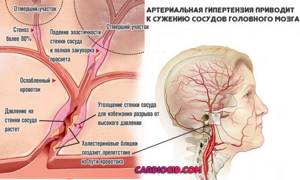
Treatment. Specific. It is necessary to reduce blood pressure levels and return them to normal. Depending on the situation, ACE inhibitors (Perindopril, Perineva, Capoten and the like), beta blockers (Metoprolol, etc.), calcium antagonists (Diltiazem, Verapamil), sartans, and centrally acting agents are prescribed.
Also diuretics. Diuretics (Veroshpiron, Hypothiazide, Furosemide). The question is very difficult. You cannot do without consulting a cardiologist, or even more than one.
Diseases of the endocrine system
Other than diabetes. Thyroid disorders are dangerous. If we produce few hormones, our metabolic rate drops. Treatment. Synthetic analogues of iodine are prescribed. Replacement therapy is carried out.
When the atherogenicity index is increased, this means that there is a violation of the liver or endocrine system organs, less often an incorrect lifestyle, and the influence of bad habits.
Normal coefficient indicators
To see deviations from the norm, you need to know it exactly. The average indicators of the atherogenic coefficient are normally 2-3 units. An indicator below 1.9 is considered reduced. The norms of the atherogenic index for men and women are presented in the table.
Norm for women
| Age, years | KA in women |
| 20-30 | <2,2 |
| 30-39 | 1,88-4,4 |
| 40-60 (there are symptoms of ischemic heart disease) | <3,2 |
| 40-60 (no symptoms of IHD) | 3,5-4,0 |
Norm for men
| Age, years | CA in men |
| 20-30 | <2,5 |
| 30-39 | 2,07-4,92 |
| 40-60 (there are symptoms of ischemic heart disease) | 3,0-3,5 |
| 40-60 (no symptoms of IHD) | 3,5-4,0 |
Prevention of high values
To prevent an increase in the atherogenic coefficient, it is important:
- eliminate smoking and alcohol abuse;
- reduce body weight if it is excess;
- monitor blood pressure, blood sugar, lipid profiles if at least one risk factor is present at least once a year, and if there are 2-3 – once every three months;
- if necessary, strictly follow a diet and take medications to normalize fat metabolism.
It is important to consider that the absence of symptoms is not always a sign of complete well-being. In half of people, strokes and heart attacks occur suddenly; before they considered themselves completely healthy. In 40% of cases, the first attack is fatal.
The atherogenicity coefficient shows the risk of heart attack and stroke due to atherosclerosis. If the norm is exceeded, diet and medications are used. The analysis is needed for people at risk even in the absence of health complaints.
Reasons for the downgrade
Why there is a reduced atherogenicity coefficient has not been sufficiently studied, despite the seriousness of such a deviation from the norm. Among the main reasons are:
- liver disease, which synthesizes 80% of all cholesterol;
- artificial restriction of animal fats in the diet - diets, therapeutic fasting, vegetarianism;
- problems with the digestive system, as a result of which the absorption of fats in the intestines is impaired;
- hyperthermia against the background of infectious processes in the body, requiring large energy costs;
- anemia, as a consequence of insufficiency of the circulatory system;
- stress;
- intoxication, food poisoning;
- incorrect or uncontrolled use of statins;
- excessive physical activity, including sports;
- taking medications: estrogens, antimycotics, antibiotics.
Methods for reducing the atherogenic index
Etiotropic therapy was discussed earlier. What to do with the atherogenic index itself? Symptomatic correction is needed.
Use special medications:
- Statins. They remove cholesterol, utilize it, and help cleanse blood vessels of plaque. Atoris, Atorvastatin and other names. The choice remains with the specialist.
- Fibrates. They are not always used. As needed and only when statins don’t work. For example, Gemfibrozil.
- A nicotinic acid. It is indispensable in the fight against some forms of hyperlipidemia.
Diet plays a huge role. It is important to completely abandon semi-finished products, canned food, questionable sausages, and fast food. Preference is given to home-cooked food. Natural products. The diet includes as many plant components as possible.
Be sure to give up bad habits. Smoking and drinking alcohol.
Low Index Features
A reduced coefficient of atherogenicity indicates problems in the body; it can change over time, but does not exceed the age limits of the norm in a healthy person. Even if overloads of any nature occur, rest and a hearty lunch are enough for the indicator to return to normal. In pathological situations, a decrease in the index in men, women, and children has its own characteristics.
Reduced atherogenicity coefficient in men
Let's face it, the situation is unusual and rarely happens. Rather, everything happens exactly the opposite: constant sitting at the computer, a sedentary lifestyle, fast, high-calorie food - lead to an increase in the atherogenicity coefficient. Fixing a decrease in this indicator is a reason to think about it. First of all, it is necessary to exclude the unreliability of the index.
It is necessary to find out whether the patient has donated blood for atherogenicity after morning exercise or jogging, whether he is a vegetarian, or whether he is undergoing treatment with appropriate medications. His attitude towards smoking, alcohol, and drugs should be clarified. Find out the state of his sexual function in accordance with age. Only after this, having explained all the intricacies of the test, the patient is sent for re-testing, eliminating the influence of all negative aspects.
Most often, indicators of a reduced atherogenic index are characteristic of pre-existing heart and vascular diseases. In this case, one of the ways to correct the pathology is to take statins, which can automatically reduce the atherogenicity coefficient. We must not forget that, unlike women, men more often have problems with alcohol, nicotine, and drug addiction, which also reduces the correlation rate of lipoproteins of different densities.
A separate group consists of men undergoing examination for infertility. Here the level of a reduced atherogenic index can play the role of a sentence. It is no secret that high and low density lipoproteins take part in the construction of cell membranes. High-density compounds (HDL) make cell membranes impermeable and retain their shape. But most importantly, these lipoproteins are involved in the synthesis of corticosteroids and sex hormones. Lack of lipids is one of the main causes of impaired spermatogenesis.
Low-density lipoproteins (LDL) control the synthesis of bile acids and are responsible for normal liver function. Without lipids, vitamin D cannot be absorbed, meaning bones lose their strength and there is a risk of osteoporosis. For men who deal with physical (and not only!) stress constantly, this is important. Finally, a lack of lipoproteins leads to hemorrhagic stroke.
Reduced atherogenicity coefficient in women
In a healthy woman, the atherogenic coefficient is normal. A decrease in the indicator below the extremely low limit of the norm indicates exhaustion. This happens if the physical or emotional stress that a woman experiences (sports, stress, artificial fasting) is disproportionate to her energy capabilities.
The second common cause of a reduced atherogenic index is the use of contraceptives. In this case, the doctor is obliged to select an analogue drug without hormonal supplements. If the index is consistently low and does not tend to fall even further, the results of the analysis can be considered to have no clinical significance, but the woman can be monitored.
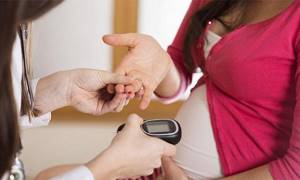
The most dangerous are deviations of the atherogenic coefficient from the norm when planning pregnancy or at the time of bearing a child. In order for pregnancy to simply occur, it is necessary:
- TC level was at least 5 mmol/l;
- LDL – no more than 2.3 mmol/l;
- triglycerides did not drop below 2.5 mmol/l.
When pregnancy occurs, these figures double. This is a condition for normal gestation, since in the female body cholesterol (HDL + LDL) performs vital functions: it is a building material for cell membranes, insulates the fibers of nerve tissue, and accelerates the production of sex hormones. A woman needs at least 200 mg of total cholesterol per day. If the condition is not met, the consequences are the most dire: miscarriage at any stage of pregnancy, premature birth, frozen pregnancy.
How to help your blood vessels?
First of all, a patient who has taken a course to reduce cholesterol containing low and very low density lipoproteins should radically change their lifestyle, diet and give up bad habits.
If physical activity is limited due to another disease, you need to visit a doctor and develop an individual plan for feasible physical exercise. But don’t forget: movement is life!
In the absence of contraindications, especially lazy people who are not used to leaving a cozy apartment can organize physical exercise at home - 30 - 40 minutes every other day. Well, those who are “fast on the uptake” can go for walks, ride a bike, play tennis, or swim in the pool on weekends. It’s both useful and pleasant, and there’s always time if you want.
As for diet, it is not at all necessary to join the ranks of vegetarians. Being a natural carnivore, humans need animal products that contain amino acids that cannot be synthesized by the human body. It’s just advisable to give preference to lean varieties of meat and fish, and heat treatment should be done by steaming or boiling (do not fry!). It is good to add various teas to your diet that lower cholesterol levels (green tea, infusions and decoctions of medicinal herbs).
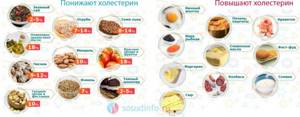
And finally: if a person wants to get an adequate result of his lipid spectrum and KA, then he should come for a blood test not only on an empty stomach, but fast for 12-16 hours the day before - then there will be no needless worries, and the study will not need to be repeated.
Should I raise
If the atherogenicity index is lowered, this is very bad, because with a 100% guarantee it warns of the possibility of developing many serious diseases, a significant increase in the risk of developing alcoholism or drug addiction. From this point of view, you need to pay attention to the following symptoms, which correspond to decreased KA:
- a sharp decrease in appetite;
- muscle weakness;
- fat in the stool (steatorrhea);
- sudden mood swings;
- decreased sexual activity;
- decreased tactile sensitivity;
- enlarged lymph nodes for no apparent reason.
All these are indications for taking a biochemical analysis. Detection of a reduced atherogenic index requires correction. It seems that you can self-medicate by enhancing your daily diet with animal fats. But this is a dangerous misconception. One wrong step, and a person faces fatal complications against the background of apparent health. Only a doctor can prescribe adequate therapy. The first person to contact in case of low KA is an endocrinologist, then a cardiologist, nutritionist, and therapist.
There are no special medications that raise cholesterol levels today. The solution is a diet that will stop the decline in indicators (ideally, prevent them). The rules are very simple:
- complete taboo on alcohol, cigarettes, drugs;
- introduction into the diet of seafood, fatty varieties of sea fish, offal, pork, beef, lamb, fatty cheeses, eggs in all varieties, butter, olives, olive oil;
- To neutralize LDL (“bad” cholesterol), unlimited quantities of vegetables and fruits, greens – everything that contains vitamin C (a natural antioxidant) are required.
Movement is another way to normalize lipid metabolism. Normal cholesterol levels are the main goal for the doctor and the patient.
How to be vegetarians
Since our liver is capable of producing cholesterol itself, some people have decided that it is possible and necessary to do without animal fats of exogenous origin. They are called vegetarians. But despite scientific research that proves the complete chemical and biological identity of exo- and endogenous fatty alcohol (this is what the human body synthesizes), doctors are not supporters of a complete rejection of dietary fats of animal origin.

This position is explained simply: the quantity, quality and ratio of vegetable and animal fats in the diet affects the activity of the brain, which itself consists of 60% cholesterol. The nervous system especially needs unsaturated fatty acids omega-3. They enter the body only with seafood, fatty fish (mackerel, tuna, halibut, salmon, herring, trout, salmon), olives, walnuts, and flaxseed.
If these acids are not enough, a real disaster occurs in the body. The most emotional children and pregnant women are the first to suffer:
- memory is impaired;
- lack of concentration;
- a person is “covered” by a feeling of despondency, depression, and lack of energy.
Vegetable fats and endogenous analogues are not able to solve the problem. Therefore, not everyone can be vegetarian. For those who do not consume animal fats, the atherogenic coefficient automatically decreases. This means it needs to be raised. But in such a strict restrictive framework, this is problematic.
Men are especially affected, whose blood vessels, unlike women's, are defenseless from any fluctuations in HDL and LDL. Essentially, men need to eat high-calorie foods because they burn calories more actively than women. But they are a priori deprived of it. The recommendations in this situation are clear:
- before becoming vegetarians, it would be a good idea to check the state of your lipid metabolism and clarify the atherogenicity index;
- if the decision is made, regular monitoring of the LDL to HDL ratio is necessary to avoid the risk of fatal complications;
- in the event of a sharp drop in the atherogenic coefficient, a specialist’s consultation is needed; you may have to forget about vegetarianism in order to restore the energy reserves necessary for work, an active family, and social life.
Some are trying to “gain fat” and return to vegetarianism. This is the worst option, which in practice ends in AMI. Fluctuations in the “cholesterol pendulum” have the most negative effect on blood vessels and the heart.

